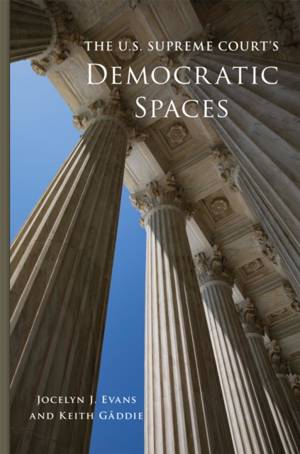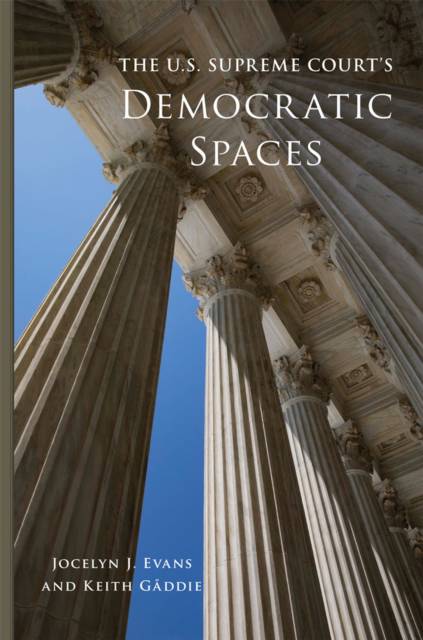
- Afhalen na 1 uur in een winkel met voorraad
- Gratis thuislevering in België vanaf € 30
- Ruim aanbod met 7 miljoen producten
- Afhalen na 1 uur in een winkel met voorraad
- Gratis thuislevering in België vanaf € 30
- Ruim aanbod met 7 miljoen producten
Zoeken
€ 76,45
+ 152 punten
Omschrijving
Atop broad stone stairs flanked by statues of ancient lawgivers, the U.S. Supreme Court building stands as a shining temple to the American idea of justice. As solidly as the building occupies a physical space in the nation's capital, its architecture defines a cultural, social, and political space in the public imagination. Through these spaces, this book explores the home of the most revered institution of U.S. politics--its origin, history, and meaning as an expression of democratic principles. The U.S. Supreme Court building opened its doors in 1935. Although it is a latecomer to the capital, the Court shares the neoclassical style of the older executive mansion and capitol building, and thus provides a coherent architectural representation of governmental power in the capital city. More than the story of the construction of one building or its technical architectural elements, The U.S. Supreme Court's Democratic Spaces is the story of the Court's evolution and its succession of earlier homes in Washington, D.C., Philadelphia, and New York. This timely study of how the Supreme Court building shapes Washington as a space and a place for political action and meaning yields a multidimensional view and deeper appreciation of the ways that our physical surroundings manifest who we are as a people and what we value as a society.
Specificaties
Betrokkenen
- Auteur(s):
- Uitgeverij:
Inhoud
- Aantal bladzijden:
- 220
- Taal:
- Engels
- Reeks:
- Reeksnummer:
- nr. 5
Eigenschappen
- Productcode (EAN):
- 9780806176017
- Verschijningsdatum:
- 28/10/2021
- Uitvoering:
- Hardcover
- Formaat:
- Genaaid
- Afmetingen:
- 152 mm x 229 mm
- Gewicht:
- 494 g

Alleen bij Standaard Boekhandel
+ 152 punten op je klantenkaart van Standaard Boekhandel
Beoordelingen
We publiceren alleen reviews die voldoen aan de voorwaarden voor reviews. Bekijk onze voorwaarden voor reviews.










